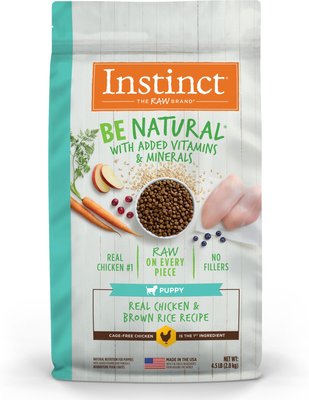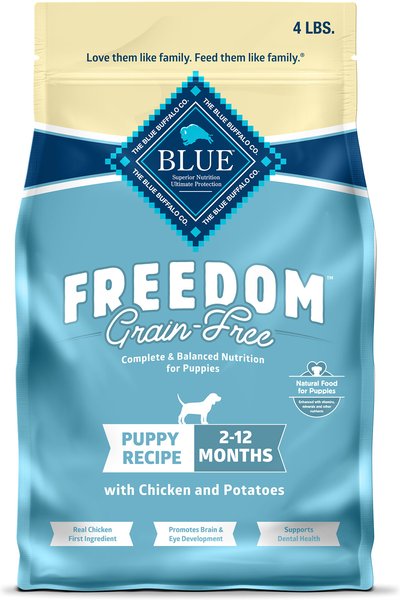What are the Best Dog Foods for Maltese dogs?

The Maltese is a dog with a distinctive, elegant appearance. A breed that is gentle, amiable, and affectionate, the Maltese is also surprisingly bold in nature and has a sturdy build. Finding the right diet to support the health of a Maltese is the top priority of every owner. Whether you share your home with a puppy, a mature adult, or a senior, our list of top-quality diets will help you select the right food to fuel your Maltese’s health and lifestyle.
Jump to section
Breed Info
Breed Group:Toy | AKC Maltese Profile
Ideal Weight:Female Adult: 5 to 7 pounds
Male Adult: 5 to 6 pounds
Exercise Need:15 to 25 minutes per day
Breed Summary
The sophisticated Maltese is a breed that enjoys an active lifestyle with its beloved family. The defining hallmark of this breed is its luxurious white coat that reaches to the floor. Though in the past, the Maltese was available in several different colors; today, this dog breed comes in only one hue: white, which increases its risk of deafness.
The Maltese has a distinctive way of moving that gives the illusion of the dog floating. A single coated breed with no undercoat, the Maltese sheds only very minimally, making it an excellent choice for families with allergies.
Despite the breed’s regal, almost haughty air, Maltese are highly energetic dogs that require daily exercise to remain physically and mentally satisfied. They are an intelligent breed, but are also known to resist training efforts, meaning a little creativity or some highly motivating training treats may be required to teach this spirited breed new tricks.
A dog breed developed as a family companion; the Maltese is a dog that thrives under the attentions of its family members. When separated from those it loves most, the breed can be prone to separation anxiety, which often results in nuisance barking and destructive behavior, if not addressed.
Maltese are not always fans of children, sometimes becoming protective of their owners. For this reason, establishing firm boundaries within the home is very important. Most breeders recommend that Maltese be placed in homes with older children for best results.
Fun fact: The Maltese is believed to be one of the oldest toy breed dogs. The breed has featured in ancient artwork and literature that traces back to Greece, Rome, and Egypt. In Greece, tombs were built to house the remains of deceased Maltese. It was believed by many cultures that this bold and attractive breed was blessed with the ability to cure illness in people.
Physical Traits
Active, sturdy, compact, elegant, athletic
Personality Traits
Spirited, bold, adventurous, affectionate, friendly
Health Considerations
-
There are many factors to consider when selecting the right food for a Maltese. All dog breeds can be genetically predisposed to some health issues. In the Malteses, the most commonly seen problems include patellar luxation, hypoglycemia, progressive retinal atrophy, white dog shaker syndrome, and portosystemic liver shunt. There are many factors to consider when selecting the right food for a Maltese. All dog breeds can be genetically predisposed to some health issues. In the Malteses, the most commonly seen problems include patellar luxation, hypoglycemia, progressive retinal atrophy, white dog shaker syndrome, and portosystemic liver shunt.
-
Eye Issues & Progressive Retinal Atrophy (PRA)
progressive retinal atrophy (pra) is a genetic health problem that affects the eyes through the gradual degeneration of the retina. Over time, this can lead to complete blindness. A diet that supports optimal eye function can be a great help to Malteses fighting this disease.
Recommendations:
Anthocyanins・ Astaxanthin・ Beta-carotene・ Carotenoids・ Glutathione・ Lutein・ Lycopene・ Omega-3 essential fatty acids・ Phytonutrients・ Vitamin A・ Vitamin C -
Hypoglycemia
Hypoglycemia is a health ailment that results in low blood sugar. Malteses suffering with this condition may exhibit signs of weakness, brain fog, an unsteadiness on their feet, and in rare cases, seizures. Hypoglycemia is typically controlled by feeding smaller meals more frequently throughout the day to maintain optimal blood sugar levels. We also look for complex carbohydrates; avoiding simple carbs/sugars that will lead to a quick spike in blood sugar followed by a major drop.
-
Joint Support (e.g. Patellar Luxation)
Patellar luxation is a condition in which the kneecap of a dog slips in and out of position. Luxation is rated on a scale from one to four with one being the least likely to cause long term health effects or pain. Maintaining a healthy body weight and discouraging your Maltese to jump can play a vital role in helping to reduce inflammation and pain that can be associated with patellar luxation. To provide support for Malteses with patellar luxation, we prefer food and/or supplements with the following ingredients.
Recommendations:
Antioxidants・ Chondroitin・ Glucosamine・ Green Mussel・ Methylsulfonymethane・ Omega-3 from Fish Oil・ Taurine・ Turmeric・ Vitamin E -
White Dog Shaker Syndrome
White Dog Shaker Syndrome is an ailment that is typically seen only in dogs with white coats. Symptoms of the disease include shaking, lack of body coordination, and rapid eye movements. The condition most often appears in dogs between the ages of six months and three years. Nutrition doesn't necessarily solve this problem, but it is worth creating awareness here and encouraging genetic testing for this syndrome.
Get a tailored nutrition profile for your dog
Our free nutritional assessment tool provides individualized recommendations based on your dog's breed characteristics, age, weight, body condition score, and activity level. It only takes 30 seconds to receive science-based insights to support your dog's lifelong health.
Are Fresh Food Diets Good for Malteses?
Only if they’re properly balanced.
Many well-intentioned Malteses parents spend a lot of time preparing meals at home, but health benefits are lost if meals aren’t properly portioned and balanced with all the nutrients dogs need. Recently, a few companies have done an excellent job ensuring accurate portions and nutrient balance by delivering pre-prepped fresh meals customized to the size and needs of your dog. Farmer’s Dog, Ollie and Nom Nom have each been approved by our nutrition team as delivering truly quality and well-balanced meals. They can be a little expensive (usually 3-4x more per day than kibble), but many find the added health benefits worth the cost. They do offer discounts to new customers, though, if you’d like to try one out.
Pros and Cons of Fresh Food Diets
✓ Diets balanced by Nutritionists・ ✓ Customized portions for weight control・ ✓ Superior digestive and immune health ・✕ More expensive than standard dog food
Foods We Recommend for Malteses Puppies
How long do Maltesess need puppy food?
Until they're 7 to 10 months old.
Malteses are very focused on growing, and how we feed them should help them do just that. Since they have so much growing to do, they need higher amounts of nutrients than adult dogs, especially proteins, fats, carbohydrates, vitamins, minerals and — don’t forget — water. It’s still important to not overfeed puppies, so make sure to portion food and keep treats to no more than 10% of their caloric intake. Since balance is so important, we recommend that your young Malteses is eating food that is made just for puppies from a reputable brand.
Find the best nutritional start for your puppy
Our recommendation tool evaluates your puppy’s breed, age, growth stage, lifestyle, and health needs to identify a scientifically appropriate diet from over 10,000 options. Obtain personalized guidance to help support healthy development and lifelong wellness.
Foods We Recommend for Malteses Adults
When should Malteses start transitioning to adult food?
When they're 7 to 10 months old
From a nutrition standpoint, Malteses become adults once they reach about 90% of their expected weight. Once adults, our two key nutrition goals are balance and maintenance. We want balance because a dog’s body is responsible for a lot of things, like digestion, fighting infection, keeping muscles strong, and chasing squirrels. These are all important tasks, so we want to make sure each body function gets its share of nutrients. We also need to maintain a healthy weight. Underfed dogs are at risk for malnourishment, and overfed dogs can become obese — both of which lead to even worse problems for a Maltese
Find the optimal nutrition plan for your adult dog
Our assessment analyzes your dog’s breed, age, lifestyle, and health considerations to recommend a scientifically selected diet from over 10,000 options. Personalized insights to help your dog thrive through adulthood.
Foods We Recommend for Malteses Seniors
When should Malteses start transitioning to senior food?
All dogs can age differently, but toy dogs like Malteses can start to benefit from senior food around 10 to 12 years old
Ever watch kids running around the playground and wish you had that energy again? Yeah. Dogs get there, too. The metabolic processes in senior Malteses slow down as they age, which often means they aren’t needing quite as many calories as they did in their prime. Smart dog food companies have formulated senior diets to ease up on calories but still help them feel full and give them adequate maintenance protein. Still, like humans, everybody is different. Sometimes older dogs need just as many calories, or more, depending on how their bodies progress. So keep a close eye on their body condition, and look for dog foods made for seniors.
Support your senior dog's health with targeted nutrition
Our assessment analyzes your dog’s breed, age, and health considerations to recommend a science-based diet from over 10,000 options. Help maintain mobility, cognitive health, and quality of life.
Affiliate Disclosure:
We do not accept money to recommend pet foods. However, we do receive referral fees from online retailers (such as Chewy or Amazon) on qualifying purchases. Our recommendations are neutral, and diet recommendations are made without considering whether we will receive a referral fee.















